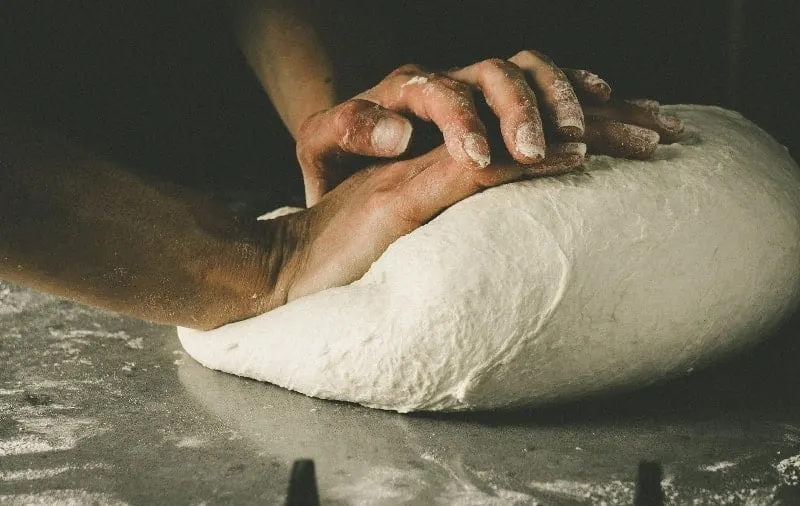There are a lot of steps that go into making bread, and there’s a lot of confusion that comes along with them. Since it’s a relatively complex process and most recipes don’t explain why you need to do certain steps, it can leave you wondering why you need to do something, or if you even need to do it at all.
You might find recipes that call for the dough to be turned out and kneaded after proofing, but what’s the point of this and is it really necessary?
You can knead your dough very gently after its first rise in order to release excess gas and redistribute the yeast. However, it’s not necessary to knead the dough at all if you already developed enough gluten before the first rise.
There’s a lot of confusion on the internet about whether you can or can’t knead your dough after its first proof, but it’s really whether you should or shouldn’t.
With some types of bread, you will want a very close-grain with minimal air bubbles, whilst with other types of bread, you will want medium-large sized alveoli (holes).
For example, you’ll want a close textured crumb when making something like sandwich bread, burger buns, or milkbread, but you might want medium-large alveoli when making traditional French baguettes or sourdough bread.
One of the reasons you might want to knead your dough after its first rise is to redistrubute the yeast. The reason to do this is so that you can intoduce the yeast to fresh food (flour) in the dough so it can keep producing gas.
So, should you knead your dough after its first proof?
Here’s When To Knead Dough After Rising
You want to knead the dough after rising when your intention is to minimize the chances of getting large holes in the bread.
You’ll most likely have seen bread that’s meant to have a very even and close crumb (sandwich bread), but it has one or two large holes in it. which look out of place and ruin the overall toasting or sandwich capabilities of the bread.
These large holes are often because a pocket of gas inside the dough has become too large during rising and baking. It won’t have been pushed out during shaping, so it’s created a problem.
You see, if the gas isn’t released from the dough after the first proof, the pockets of gas will just continue to expand and cause large holes. Some of these gas pockets can even expand so much that they burst into other gas pockets and cause very large holes to run throughout the bread loaf.
For this reason, you want to release excess gas so that the crumb stays tight and uniform. You can absolutely do this through the process of gently kneading, but there are also other ways to release excess gas.
Some people like to be more gentle with their dough after it has risen, so they simply flatten the dough out with their fingers and try to get as much gas out as possible before shaping it.
Other people like to use a rolling pin to flatten the dough out to an even thickness whilst also compressing out any trapped gas. This method works best for dough on the dryer side so it won’t stick to the rolling pin. Once it’s flattened out, it can be rolled up tightly, proved again, and baked as normal. This is best for bread baked in a tin.
Here’s When You Should Avoid Kneading Dough After Rising
Since you want to knead bread to get a more even and tight crumb, you get the opposite from not kneading it. If you’re after an open crumb with lots of holes, you want to avoid kneading the dough after the first rise.
During the rising process, the gas produced by the yeast gets trapped by the gluten structure. As more gas is produced, the gluten acts like a balloon and contains the gas whilst slowly expanding.
Over a period of time, these gluten balloons will grow larger and larger until the dough is fully proofed. You want to maintain these pockets of gas in order to get a good alveoli structure, so it’s wise to avoid kneading or you’ll ruin the structure.
There will be some gas escaping when shaping the dough, but this is completely fine providing that you do it carefully. Maintaining the alveoli structure (gluten balloons) is very important, so it requires you to be very gentle with the dough.
By maintaining the structure of the alveoli in the dough, you’re allowing them to expand again during the final rise and during baking, which will leave the bread with an open crumb.
If you were to knead the dough instead, you’d end up knocking out too much air and ruining the alveoli structure, which would leave your dough with a closer crumb rather than an open one that’s filled with holes.
Bread such as sourdough or traditional French baguettes both get their open crumb by maintaining the alveoli structure of their dough before baking
.

